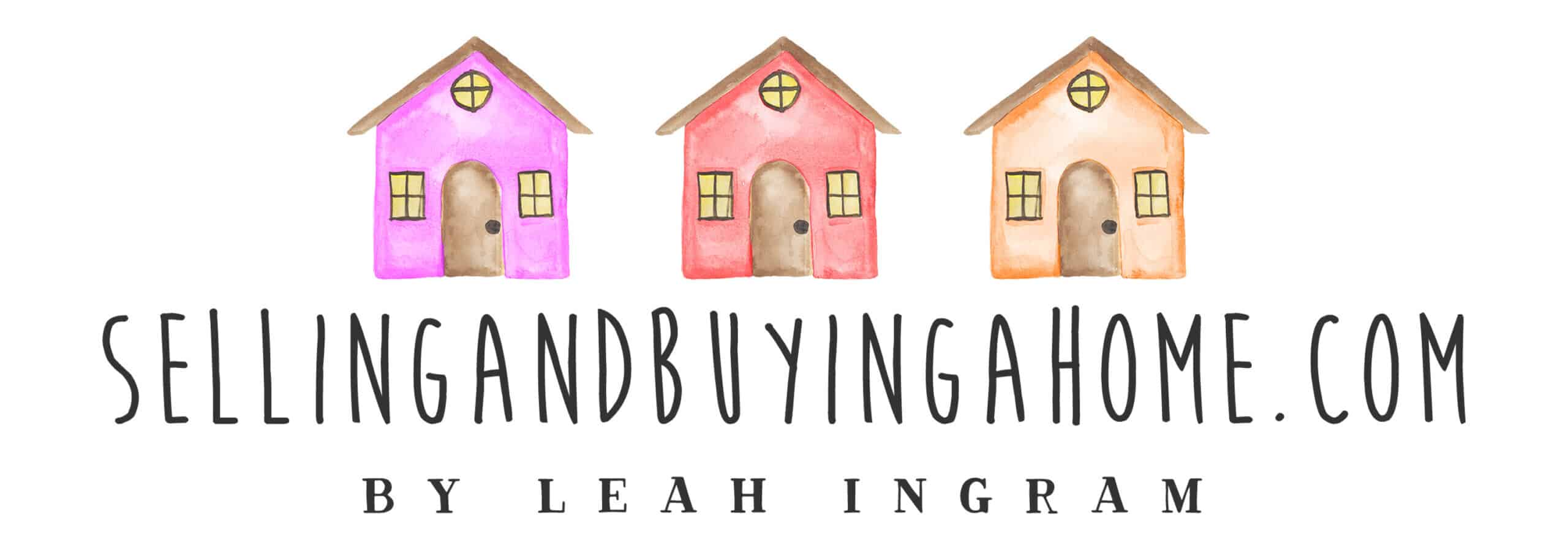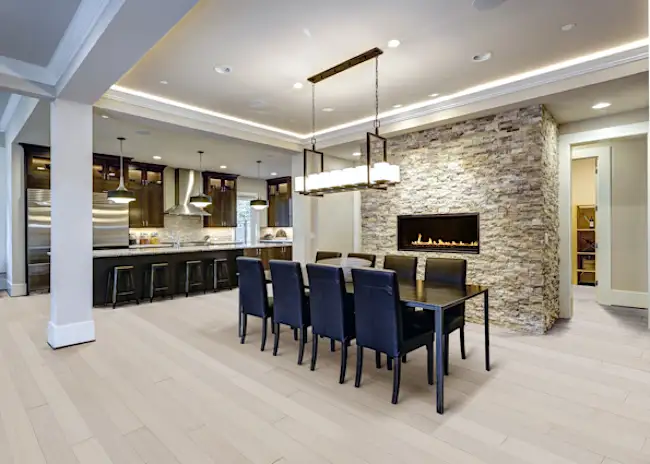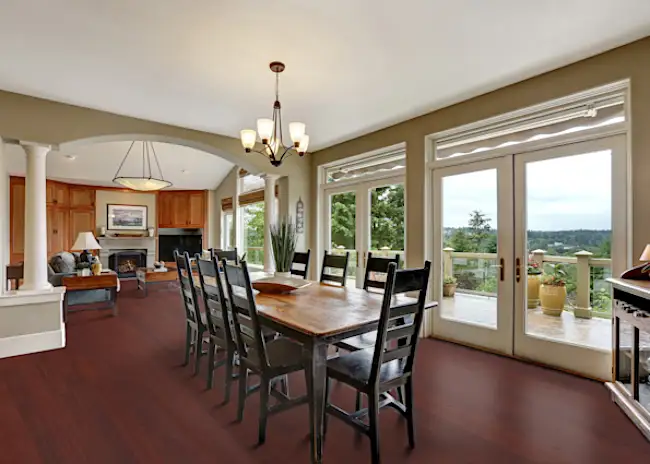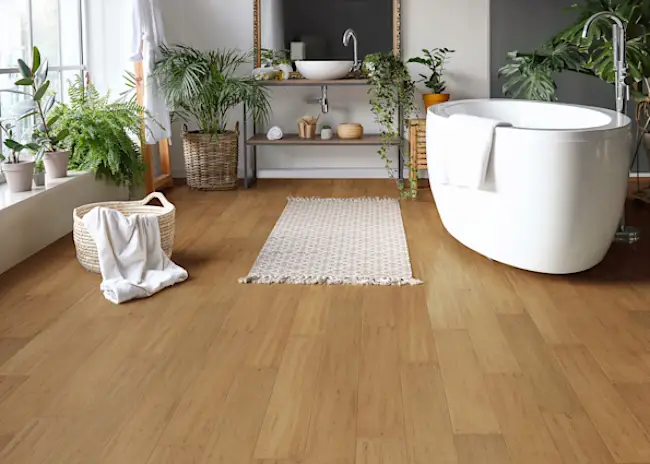When my husband and I were looking to replace the floors in our house, we hadn’t even considered that you could use bamboo as a hardwood flooring.
I always thought that flooring had to be wood-wood–you know, from trees. However, when we visited Home Depot to consider our options and our budget, that’s when we first started thinking about bamboo.
So, if you’re in the market for redoing your floors or replacing carpet with smooth flooring, let me present the pros and cons of bamboo flooring. I think it could help you with your decision making.
Redoing your floors is a great way to get your home ready to sell.
What are bamboo’s pros and cons
As with so many decisions with home improvements, you really need to weigh the pros and cons before making a decision. However, when it comes to flooring, bamboo has a number of things going for it. Let me delve into the pros before getting to the cons (albeit just a few).
Finally, you may see stores using the term engineering bamboo. Keep in mind that all bamboo has to be naturally engineered to turn into wood planks or tiles.
So, real bamboo can also be called engineered flooring. It’s not the same as laminate, though. More about laminate a bit later in this article.
Pros of bamboo flooring
There are many pros to choosing bamboo flooring for your home. This includes durability, costs and the fact that it’s eco-friendly and renewable.
Bamboo is cheaper than hardwoods but not by much
So, bamboo is definitely cheaper than hardwoods. But the savings aren’t huge when looking at basic hardwoods vs bamboo.
This article on The Spruce says bamboo costs just under $4 per square foot. On the other hand, hardwoods range from $4 to $8 per square foot. This is for basic hardwoods.
However, if you go with more exotic hardwoods, such as mahogany, then you’re going to pay significantly more. Bamboo is just bamboo. So the prices don’t go up that much for a “better” bamboo floor.
Durability on par with hardwoods
When it comes to durability, you’ll find that bamboo is on par with hardwood flooring. In fact, some people say that it holds up better in homes with pets than hardwoods do.
That is, the bamboo is more resistant to scratches and dents. So if you’ve got dogs who tend to beat up your floors, you may want to replace them (the floors, not the dogs) with something made from bamboo.
The only exception is with regards to moisture. That is, bamboo tends to absorb more water than hardwoods. Which is why I’ve spelled this out in the “cons of bamboo flooring” section below.
An eco friendly flooring choice
Did you know that bamboo is, technically, a grass and not a tree? Therefore, the flooring is not wood and no trees were harmed in making bamboo flooring.
Also, bamboo grows much faster than trees. Therefore, when you cut down bamboo to make flooring, it’s easier to replace.
According to Environment America, bamboo can grow up to 3 feet per day and is ready for harvest in just 3 years. This is compared to the 50-plus years it takes many trees to grow and be ready to harvest.
Also, bamboo helps reduce a carbon footprint. That’s because it releases oxygen back into the environment like many plants do.
Lots of color choices
Even though bamboo is naturally a light tan color, it can be dyed, stained and what’s called “carbonized” to create different colors. Here are some of the color options you might find in bamboo flooring:
Cons of bamboo flooring
Below are some of the cons of bamboo flooring. This is based on my opinion having shopped for this flooring option in the past.
Splinters are possible
One of the downsides of bamboo flooring is the possibility of splinters. I discovered this when shopping for flooring.
I can recall running my hands over the planks of bamboo flooring. At one point my skin snagged and I realized I’d gotten a splinter.
Now, to be fair this was a lower-cost bamboo option. And maybe with bamboo, you really do get what you pay for–or don’t pay for. And in this instance this would be a splinter-free floor.
It’s possible that splinters are something that’s unique to bamboo. Because I can recall putting down cheap oak wood planks, before they were finished, and never getting a splinter. Did my socks snag on them? You bet. But nothing ever pierced my skin.
Bamboo absorbs water
Unlike laminate or some hardwoods, bamboo tends to be more absorbent than other flooring materials. Therefore, you have to be careful where you lay bamboo flooring.
For example, it’s probably not a good idea to put bamboo down in any room in your home that is exposed to water on a regular basis. So, take bathrooms, kitchens, mudrooms and vestibules off the list.
However, Lumber Liquidators has a line of flooring called water-resistant bamboo. So that might be worth checking out.
What about laminate bamboo flooring
Laminate flooring may include some of the materials in the name, such as bamboo. However, it is not real wood.
For example, if you were thinking of buying a laminate version of a bamboo flooring, you’ll get something that looks like real bamboo hardwoods. However, it will have only a thin veneer of bamboo on the surface.
Now, let’s say you’ve put real bamboo throughout your entire home. However, in the bathroom or kitchen you want something that looks the same but holds up to water better. Then, that might be the place to go with a laminate.
How to care for bamboo flooring
So what goes into caring for your bamboo floors? Experts recommend sweeping it daily and mopping it weekly.
I don’t know about you, but I never sweep my floors daily. Every few days? Sure. But daily seems excessive to me. I don’t even run my vacuum cleaner every day.
Am I a slob?
Also, even though bamboo is durable, you can damage it. So, if you’ve got furniture with feet, invest in these felt pads for the bottom of furniture.
This way you can move chairs or tables without worrying about scratching the floors. You’d do this with “regular” wood floors anyway, right?
Finally, as I mentioned above, bamboo can absorb water. So be sure to clean up spills right away to avoid damaging your floors.
How to clean bamboo floors
As far as cleaning bamboo floors, use your favorite floor cleaner that is made for hardwoods. I was raised on Murphy’s Oil Soap, and you can use this on bamboo, too.
Want the secret to avoiding streaks on your floor? Make sure your mop isn’t too wet. It’s that moisture that a saturated mop leaves behind that turns into streaks.
Also, never use a steam mop on bamboo floors. It can do irreparable harm to your floors and damage them permanently.
Where to buy bamboo flooring
Years ago you could only get bamboo flooring from specialty flooring stores. No longer.
Now, most of the big box stores and national home improvement centers carry bamboo flooring. This includes:
Unfortunately, it doesn’t appear that Costco sells bamboo flooring. It does sell all other kinds of flooring options, though.
However, if you’re interested in the Cali Bamboo brand of flooring, I’ve got great news: Home Depot carries Cali Bamboo.



